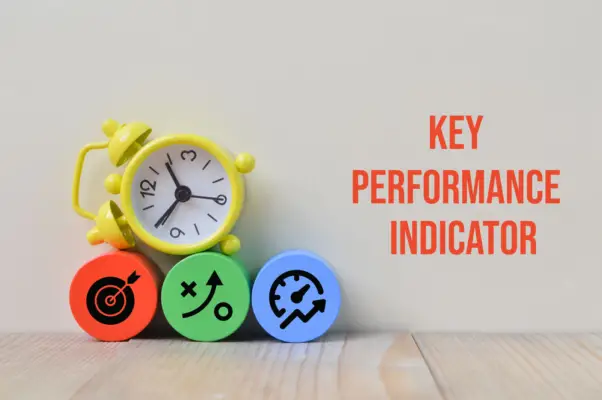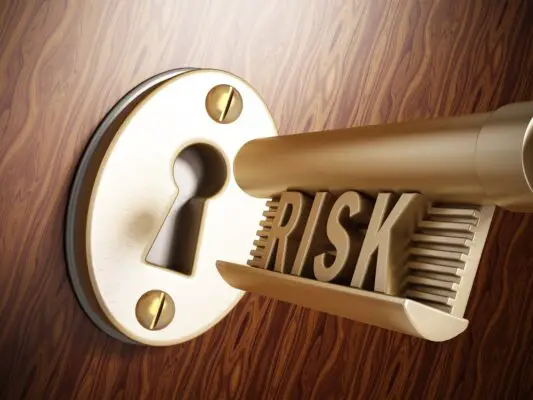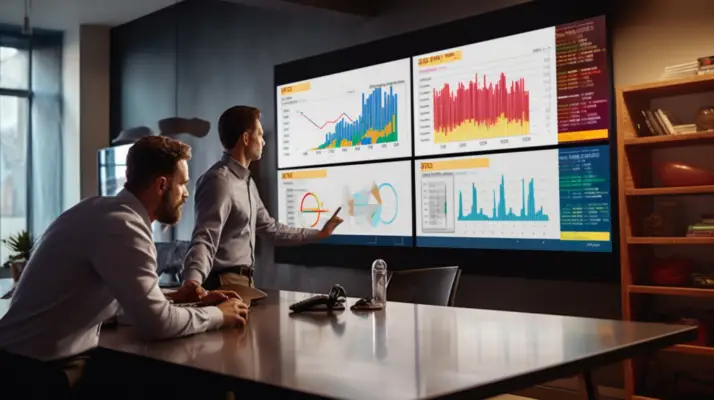Effective use of Key Risk Indicators (KRIs) stands as a vital strategy for businesses aiming to identify and mitigate potential risks preemptively.
Professionals can effectively leverage the full potential of KRIs by selecting relevant indicators, aligning them with organizational goals, and employing them in proactive risk assessment.
Our exploration of KRIs will enhance your understanding and application of these essential tools in enterprise risk management.
In a business environment, accurately assessing risk factors can spell the difference between success and failure.
However, navigating through such uncertainty effectively relies heavily on understanding and implementing Key Risk Indicators (KRIs). These critical metrics serve as navigational aids, providing key insights into potential risks before they materialize.
Covering an extensive range from basic understanding to developing and implementing KRIs, this essay aims to cultivate a profound comprehension of KRIs.
This guide is tailored to provide the industry-specific knowledge required for designing effective KRIs and equip professionals with strategies to monitor these indicators and utilize results to enhance business decisions.
Understanding Key Risk Indicators
Building Strong Businesses with Key Risk Indicators
Staying ahead mandates a thorough understanding of your organization’s risks and the tools to address them effectively in the constantly evolving business terrain.
An essential instrument in the risk management arsenal is Key Risk Indicators (KRIs). With KRIs, businesses can proactively manage risks and safeguard their profit margins, thus fostering robust and resilient enterprise models.
Key Risk Indicators, Simplified
Think of KRIs as the compass guiding the ship of your business through the vast ocean of risks. They are specific measures that signal the increase or decrease in an organisation’s risk exposure.
KRIs are quantifiable, data-driven, and tailored to fit an organization’s unique risk profile.
KRIs differ from Key Performance Indicators (KPIs), though both offer insightful data about business operations. While KPIs measure performance success, KRIs focus on potential threats that could undermine it.
Together, they offer a comprehensive picture of a company’s health.
Why Key Risk Indicators Matter
KRIs offer a powerful, preventative tool in the risk management toolkit, enabling businesses to identify, monitor, and respond to risk before it escalates to a crisis. By leveraging KRIs, enterprises can:
- Anticipate risks: KRIs act as an early warning system, predicting potential risks stemming from changes in operational, financial, or market conditions. Highlighting risks early gives businesses a head start in devising effective counter strategies.
- Guide strategic decision-making: Informed decisions are the lifeblood of any successful business. KRIs provide factual data about risks involved in various strategic moves, enabling businesses to make informed and intentional decisions.
- Ensure regulatory compliance: Businesses operate in a legal and regulatory requirements maze. Kris can help identify areas of non-compliance, enabling organizations to maintain their legal standing, protect their brand reputation, and avoid hefty fines.
- Promote proactive culture: The regular monitoring and analysis of KRIs encourages a culture of proactive risk management among all staff. It stresses the importance of risk awareness and encourages staff to be risk sensors, ensuring the early detection of potential threats.
With the right KRIs and the strategic use of their findings, businesses can survive and thrive amid complexities, enabling them to stay robust and relevant.
From multinational corporations to fledgling start-ups, KRIs hold the power to revolutionize business fortunes, sparking innovation and securing market dominance.
In conclusion, it’s time to view risk not as an enemy but as a powerful ally. It’s time to shift from deterministic models to more adaptive, resilient ones. It’s time to harness the power of Key Risk Indicators.

Developing Effective Key Risk Indicators
Developing Effective Key Risk Indicators: A Strategic Roadmap for Different Industries
The robustness of an organization’s approach towards Key Risk Indicators (KRIs) speaks volumes about its place in this high-stakes, highly volatile business world.
An organization that can successfully tap into the potential of KRIs is prepared to navigate the swiftest currents and highest tides of its respective industries. However, crafting effective KRIs is where the real genius lies. Here’s how it can be achieved.
- Decipher the industry-specific landscape: Each industry has its unique set of risks. Healthcare grapples with medical malpractice and privacy breaches. For finance, market volatility and non-compliance are tangible threats. Manufacturing worries about operational disruption. Understanding the nuances of these sector-specific risks is the first step to developing potent KRIs.
- Align with strategic objectives: KRIs, much like their strategic counterparts, KPIs, should align closely with the overall business objectives. It’s about fostering a growth mindset while effectively balancing risks. An effective KRI watches over critical risk areas without hampering progress or innovation.
- Leverage Technology: In this digital age, harnessing the power of advanced analytics and AI for predictive insights into potential threats is essential. Using sophisticated analytics tools, businesses can design KRIs that alert them to current and potential future risks.
- Engage Stakeholders: KRIs must resonate with both internal stakeholders and external investors. When KRIs are understood and supported by all relevant parties, they carry more weight and significantly impact the organization’s risk management approach.
- Regular Re-evaluation: Given the dynamic nature of risks, KRIs cannot be static. Key indicators that proved effective last quarter might be obsolete now. Hence, a periodic review and recalibration of KRIs is a must.
- Pandemic Proofing: In a post-COVID world, discerning businesses appreciate the need to adopt and integrate pandemic-related risk parameters into their existing KRIs. It is about building resilience into the business model while preparing for such black swan events.
Remember, crafting well-refined Key Risk Indicators is not an overnight task. It requires a perfect blend of analytical acumen, sector-specific knowledge, technological resourcefulness, and consistent follow-up.
Done right, KRIs will serve as a business’s compass in turbulent times, guiding it away from peril and towards possibilities and redefining the very DNA of its risk management culture.

Implementation and Monitoring of Key Risk Indicators
In the fiercely competitive business landscape of today, staying one step ahead of the competition is not just a luxury; it is a necessity.
This encompasses identifying and mitigating key risks effectively and intrinsically. Businesses can secure a powerful advantage by understanding industry-specific risks, aligning Key Risk Indicators (KRIs) with strategic objectives, leveraging modern technology, engaging stakeholders, and continuously re-evaluating and recalibrating KRIs.
To attain the best business outcomes, it’s critical to understand industry-specific risks. Every sector carries its unique set of risk parameters – operational, strategic, compliance, or financial.
Businesses can proactively address potential challenges by accurately profiling risks and diligently monitoring associated KRIs. This allows them to seize the opportunities within adversity.
Likewise, aligning KRIs with strategic objectives must be integral to the business planning process. Risk indicators should be tied directly to measurable strategic goals to provide a continuous feedback loop that enables data-driven decision-making.
This alignment makes risk management a corporate priority and ensures it contributes demonstrably towards reaching set objectives.
In this digital era, technology makes a massive difference. Machine learning and big data analytics can provide real-time monitoring of KRIs. Predictive models can project potential risk outcomes – a dynamic advantage that trumps traditional reactive risk monitoring.
Interpretive software can visualize risk data in comprehensible formats, making it easier for non-technical team members to understand and act upon.
Risk management is not an isolated task – it is an enterprise-wide undertaking. Engaging stakeholders in KRI development and implementation drives accountability, ownership, and comprehensive risk understanding across the organization.
Nonetheless, as business circumstances and objectives evolve, so must the KRIs. Regularly re-evaluating and recalibrating KRIs ensures they remain relevant, targeted, and actionable.
Being rigidly attached to an outdated KRI framework can blind an organization to new and emerging risks.
Lastly, the COVID-19 pandemic is a stark reminder of the importance of integrating external risk factors into a robust KRI framework.
Factors such as pandemic-related impacts, geopolitical uncertainties, climate change risks, and shifting customer preferences can create disruptions and should be thoughtfully incorporated.
In the final analysis, effective monitoring of KRIs is not just about spotting red flags and responding to them. Businesses that understand their risk landscape, harness technology, engage stakeholders in a cohesive risk culture and continuously fine-tune their KRIs position themselves as agile, resilient entities.

Conclusion
The extensive understanding and effective strategic implementation of Key Risk Indicators essentially lay the foundation for robust risk management structures.
The ability to design industry-specific KRIs, continually monitor the risk landscape, and make informed decisions based on these indicators is a crucial skill set for today’s professionals.
Adopting these strategies can help professionals anticipate and manage potential risks, strengthening their business’s resilience against an unpredictable environment.
Ultimately, the know-how of utilizing Key Risk Indicators effectively is not only an asset but an imperative in a world where businesses continually grapple with diverse and complex risks.

Chris Ekai is a Risk Management expert with over 10 years of experience in the field. He has a Master’s(MSc) degree in Risk Management from University of Portsmouth and is a CPA and Finance professional. He currently works as a Content Manager at Risk Publishing, writing about Enterprise Risk Management, Business Continuity Management and Project Management.


